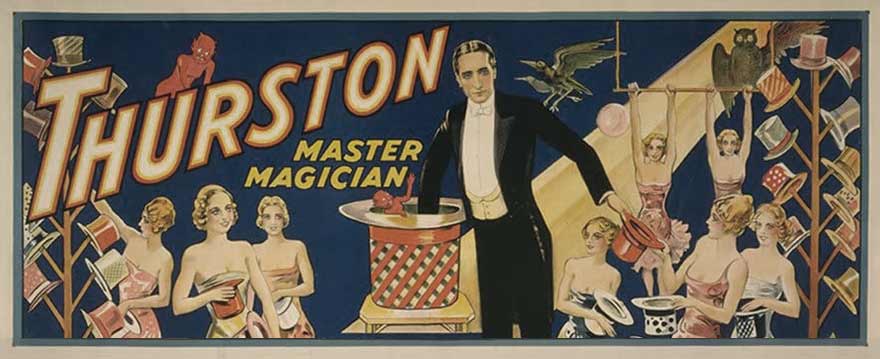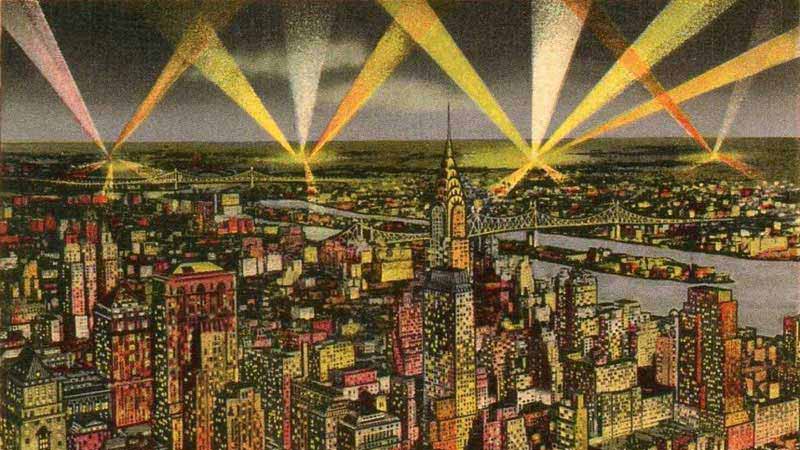
by Dr. Will Given
University of California, San Diego
When Good Magic Shows Go Bad
In our last article, I talked about the need to understand audiences and how vitally important it is to empower them to become active in the construction of the theatrical experience. Even when this is accomplished, a show can still fall short of its creators' vision. There are myriad factors that can lead to this: something can go wrong on stage during a performance, there can be technical difficulties, there can be problems with the script itself, etc., etc. These are some topics we will examine in depth in future articles, but for now we are going to focus primarily on pacing. Pacing is ultimately the number one culprit we want to look at when trying to assess how a good show has gone bad.
So, what is pacing? Pacing is what fuels the battle taking place in each of your spectators – the battle between being completely immersed in the theatrical experience you are all actively creating together and being very aware (and painfully cognizant) of the reality of sitting in the performance venue watching a show.
To illustrate this, we are going to take a look at two examples: the Royal Shakespeare Company's Macbeth and the National Theatre's Antony and Cleopatra. Comparing the two plays we see that they are, of course, both written by the same playwright (Shakespeare), they were both staged in 2018, both featured famous actors in the lead roles (Christopher Eccleston as Macbeth; Ralph Fiennes as Antony), and were both running in London at the same time. The plays themselves fall on opposite ends of the Shakespeare-play-length spectrum; Macbeth is one of the shortest (~2477 lines) whereas Antony and Cleopatra is one of the longest (~3573 lines). This means, assuming the plays are not cut dramatically, a spectator could reasonably expect to be sitting in uncomfortable theatre seats far longer at Antony and Cleopatra than they would at Macbeth. But this was not the case. Macbeth (with a 2:36 run time) seemed to drag on and on, while Antony and Cleopatra flew by (even with a 3:40 run time).
Why?
It all comes down to pacing.
There are numerous factors that can contribute to pacing problems. Missing cues, stumbling over lines, the aforementioned technical difficulties, unmotivated and unnecessary blocking, and complex scene changes can all grind a show down to a screeching halt, but in our examples we are examining in this article, these elements are not to blame. Both are top theatre companies with the best artists working to create the theatrical experiences. Building off of my last article, Understanding Audiences, it comes down to the notion of performing with an audience as opposed to performing at an audience. In Macbeth, there were directorial choices that kept the audience very separate from the performance itself – the focus was put on time and a clock counting down on stage and not on the characters themselves – whereas in Antony and Cleopatra the audience was invited to completely focus on the characters and was challenged to empathize / condemn / sympathize / understand the characters in each audience member's own unique way. The spectators were not being told how to feel (such as Macbeth telling us we need to feel anxiety because, hey, there's a ticking clock on stage!); instead, the spectators were each wrestling internally with how they feel about the characters as the action progressed. In doing so, the walls of the theatre melt away and one is able to completely commit to her or his own suspension of disbelief and become part of the show.
This becomes a question then of who exactly does a production serve? In our examples we see:
Macbeth → serves director's idea → this becomes central focus → audience performed at → dramatic slowing of pacing
Antony and Cleopatra → serves spectators' emotional journey with the characters → focus is on this internal struggle → audiences performed with → dramatic acceleration of pacing
How, then, does this all relate to magic? (This is a question you will find we will be asking ourselves constantly as we move forward in this journey together). Before you can solve pacing issues with your show, you must ask yourselves, who does your show serve? Does it serve the audience? Do you want to create a unique experience for your audiences – one they will be talking about after the show?
Or, does your show serve you? Does it serve your ego? Is it one extended commercial to show how clever or tricky or funny or whatever it is you are so people in your audiences may book you for a future gig?
If it is the latter, this must change. Now.
As we learned in the last article, audiences are intelligent. If an audience sees you just performing trick after trick with no real direction in your show, and then standing there on stage wanting them to applaud your cleverness, your show is going to feel like it drags on and on forever. Audiences will be thinking about the end, where they can be freed from the confines of the theatre, and not about the journey that you are all taking together.
To help move away from having a self-aggrandizing show that is there to bolster the performer's ego, it becomes necessary to put the work in to determine what the emotional arc is you want your audiences to experience. Remember, there is no such thing as a generic audience – each spectator is going to experience the show in his or her own way – but what you want to do is to give them markers along the way that they can then use internally as they determine how they are going to respond to those emotions. For example, how do you react when you are scared, like absolutely terrifyingly scared? Do you scream? Do you laugh? Do you cover your eyes? Do you prepare to fight? There are all different kinds of responses, so it is a mistake to expect a certain reaction en masse from your audience as a whole when you try to plot out the emotional journey you want to take your audiences on.
The key is that putting the work into envisioning how you can involve your spectators in the creation of your performance will be the first step to creating an active and dynamic pacing for your performance. If, however, you choose to forego that, and instead feel that audiences are just going to be in awe of the tricks you perform, then the entire performance will feel like trudging through treacle.
You do not want this. You do not want the audience waiting for the metaphorical (or literal in the case of the RSC's Macbeth) to finally reach its end – you want your audiences completely immersed and a part of the experience you are all creating together.
In our next article we will build on this concept even further and start taking a look at story structure and how it can be used to strengthen the pacing of your show.
In the meantime, remember, it's all about pacing!
Dr. Given is a writer and director. He has PhDs in Drama and in Theatre and is a member of the prestigious The Dramatists Guild. He has been involved in over twenty-five stage productions as an actor, director, or dramaturg. He has written for television, film, and the stage, and served as a screenwriting judge for the Austin Film Festival, where he has analyzed and given feedback on hundreds of scripts. He is a Magician Member of the Academy of Magical Arts and holds the rank of AIMC in The Magic Circle. Dr. Given is based in Southern California where he has taught at a university for the past ten years, helping develop the next generation of writers. He wants nothing more than to help you make your show the best it can be. You can learn more about his directorial services by writing him at The Magic Director.
A Jolly Genie?

The Magic Oracle is a FREE site but I still must pay dastardly server fees! Please, donate ANY amount... $1, $5, $10, why not $1 million?
THANK YOU for keeping magic alive... and me, a Jolly Genie!



